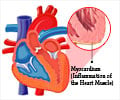A key resource to provide a better look at how genes in specific cells contribute to the risk of coronary artery disease has been created by scientists.

‘Coronary artery disease is a type of heart disease. It occurs when there is a buildup of plaque, often caused by cholesterol, inside the lining of the heart’s arteries.’





“This new atlas will help us narrow down the cell types responsible for gene regulation in the heart vasculature. It will also provide a roadmap for interpreting non-coding disease variants in the most relevant tissue,” said Miller, of UVA’s Center for Public Health Genomics and Departments of Biochemistry and Molecular Genetics and Public Health Sciences. “Knowing how these variants operate via cell type-specific regulatory elements should help facilitate both mechanistic and translational studies across the coronary artery disease spectrum.”
Targeting Coronary Artery Disease
When the plaque builds up, the arteries narrow. This decreases the supply of oxygen-rich blood to major organs in the body, which can result in heart attack or death.Both environmental factors and genetics contribute to an individual’s lifetime risk for developing coronary artery disease. Understanding which genes can play a part in driving the disease risk at the early stages may help researchers develop more precise or preventative treatments.
“Using the state-of-the-art single-cell sequencing technology, we have increased the resolution of this atlas to an unprecedented level,” said co-author Chongzhi Zang, PhD, also a member of UVA’s Center for Public Health Genomics and Departments of Biochemistry and Molecular Genetics and Public Health Sciences. “For the first time, we are able to directly study chromatin factors that potentially control coronary artery disease genes in thousands of individual cell nuclei.”
Chromatin is a combination of DNA and proteins that makes up our chromosomes; it plays a key role in directing the activity of genes. In this case, the new chromatin atlas will allow researchers to better understand how chromatin controls the genes that contribute to coronary artery disease.
“By pinpointing the genes that can cause disease, we may ultimately be able to develop more effective interventions tailored to an individual’s risk profile,” Miller said. “Our work aims to advance our ability to target genes in specific cells or cell types.”
Advertisement
Using this method, Miller and colleagues were able to capture the regulatory profile of several important genes, including PRDM16 and TBX2. These genes are transcriptional regulators that have already been associated with cardiovascular processes and may play a role in an individual’s development of coronary artery disease.
Source-Eurekalert















